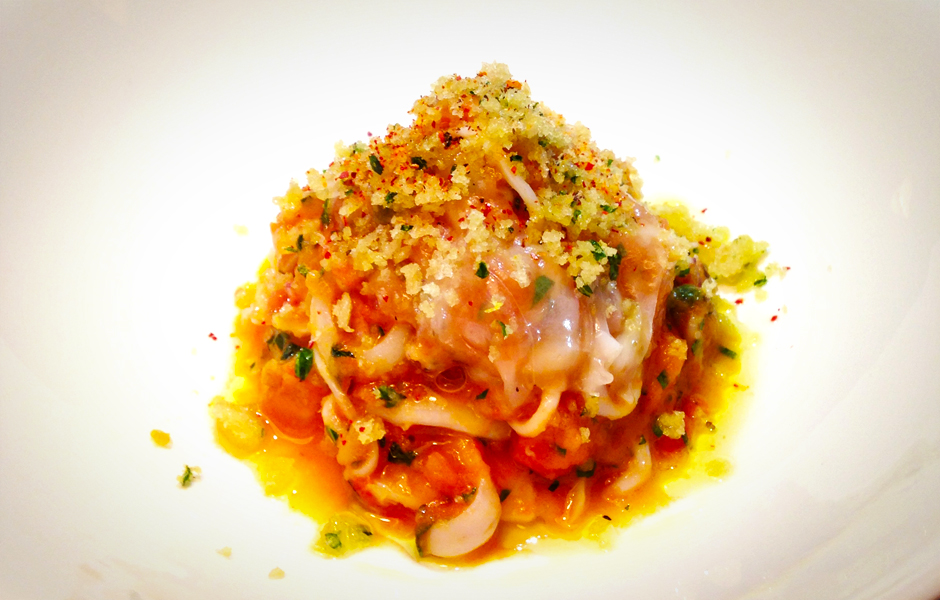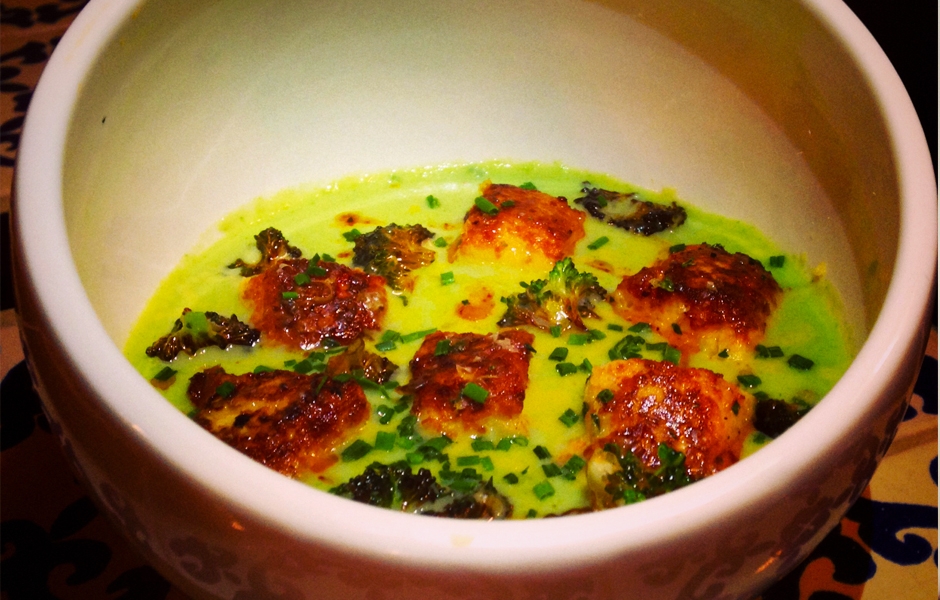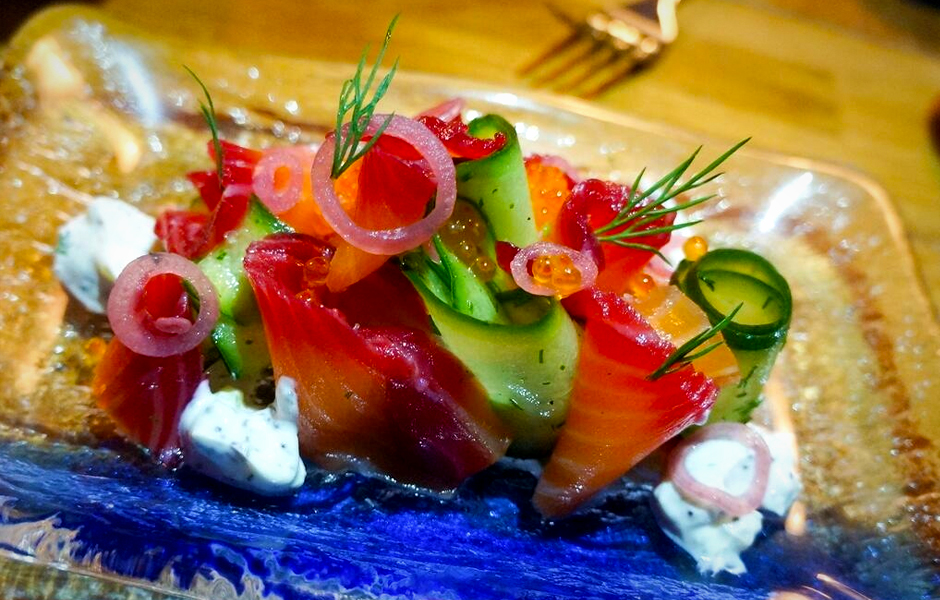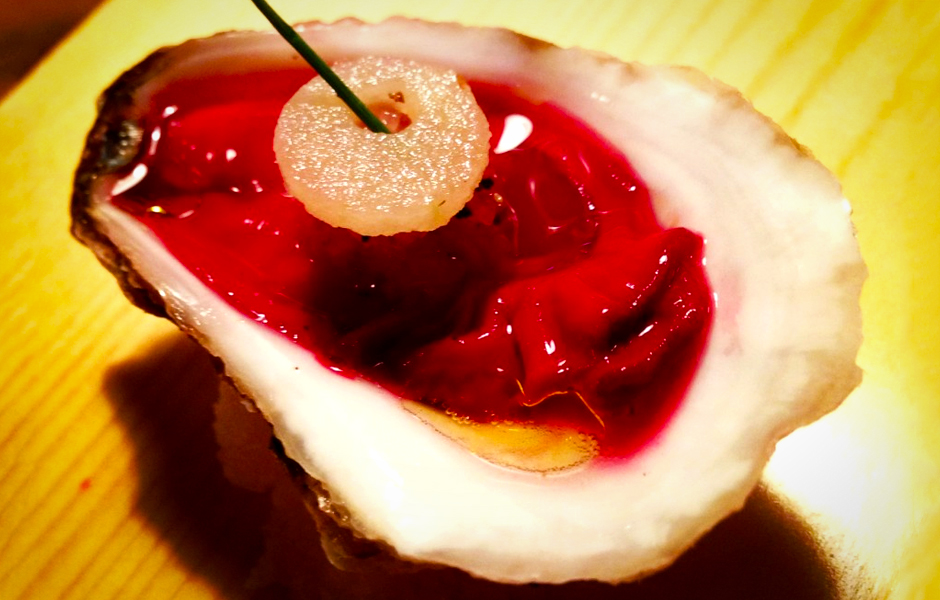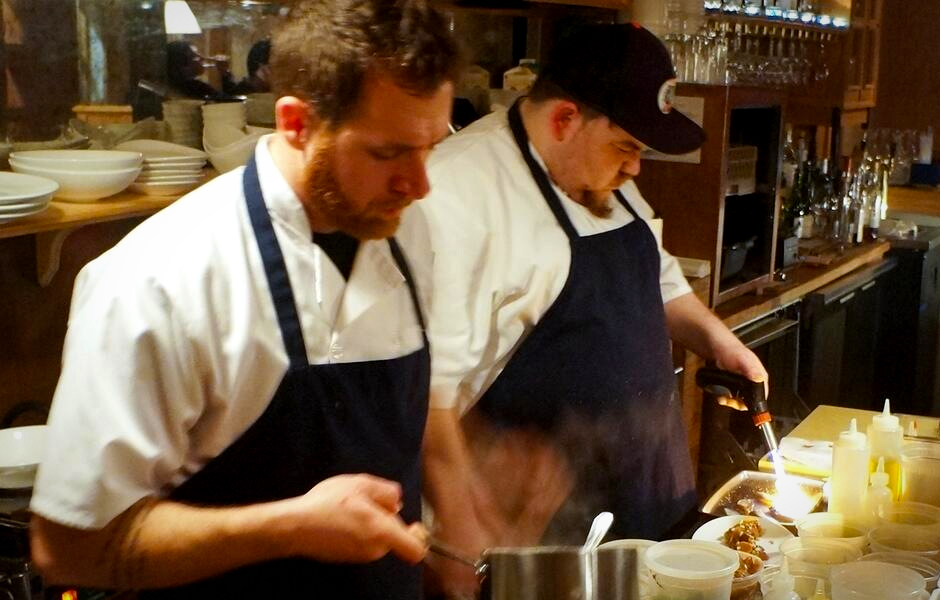Earlier this month, we ventured out to Brooklyn’s Carroll Gardens neighborhood to dine at recently-opened restaurant Bergen Hill. In the four hours that followed, we tasted some of the most delicious and diverse dishes by Chef Andrew D’Ambrosi, prepared with not much more than a few hot plates and elementary kitchen tools. Brooklyn-born and South Florida-raised, Chef Andrew began his restaurant career at age 24 working with chefs Dewey Losasso and Michael Schwartz in Miami before moving to NYC in 2005. At that time, he lived about three hours north of the city and spent many nights sleeping in the chef’s locker room because the bus to get him home stopped running before the end of his shift. He was a contestant on Season 4 of Top Chef before working at Le Cirque and becoming the executive chef at Norwood Club in Manhattan. Years later, he worked with Ravi Derossi at the Cienfuegos/Amor y Amargo/Gin Palace complex in the East Village, which ultimately led to the opening of Bergen Hill.
After watching him prepare our delicious meal, we chatted with Andrew about cooking in the Bergen Hill kitchen, how he concocts the perfect marriage of flavors and what’s next for the restaurant this year.
When you opened Bergen Hill back in September, what was the main experience you wanted customers to take away? Has this focus changed in the six months you’ve been open?
We wanted to provide our guests with a comfortable and relaxed environment combined with a unique, thoughtful and delicious menu alongside a beverage program to heighten their experience. I think we’ve achieved the alchemy, and now the challenge is to keep that ideal intact because we’re much busier than before.
You guys make absolutely delicious food with only a few tools – four induction burners, a sandwich press, sliding machine, ice cream machine, KitchenAid, blender and food processor to be exact. What drove the decision to work with this pared-down type of kitchen rather than the full shebang?
The restaurant’s main focus is raw seafood, so we knew we didn’t need an entire kitchen set-up. But we did need the ability to cook and execute hot dishes, so electric was the way to go. There are pros and cons with going electric, but not having to outfit your kitchen for fire safety (hoods/fire suppression systems) has saved a lot of money. And that money can be used elsewhere, like salaries.
The fish you serve is some of the freshest we’ve tasted in Brooklyn. What are your secrets for finding the absolute best quality possible? Any tips for those of us browsing the fish or farmers market on taking home the finest specimens?
There are physical signs that tell the quality of the seafood you’re about to purchase, one being the eyes – they should be plump and shiny, not dry and sunken in. The gills should be red, not brown. No stink! The only other advice I can say is you should get to know your purveyor and trust the integrity of the product they provide.
What makes your food so delicious is you can taste every single ingredient in its simplicity while at the same time recognizing the wonderful marriage of flavors you bring to a plate. Is it challenging to find this balance for each dish? How much trial and error do you typically go through to create these perfectly crafted plates?
There’s a balance I try to achieve with every creation. The process should never be forced or rushed, it should feel natural. Over-thinking and second guessing are a cook’s worst enemies. Therefore, it could take an hour or three weeks depending on the dish. The combined effort on the plate may look complicated, but each individual ingredient is simply prepared. Respecting them and having a bit of reserve can go along way in making a great dish. It’s “the whole is greater than the sum of its parts” theory, applied to food.
You also have a wonderful cocktail program Bergen Hill. Can you tell us a little bit about how you came up with the menu and how it correlates back to the food?
I wanted to have a beverage program where the cocktails would compliment the food, much like wine pairing. We had Sother Teague from Amor Y Amargo, who used to be a chef, help develop the program. Every new cocktail gets tasted alongside its paired dish before it hits the menu.
What is next for Bergen Hill? Anything we should be looking for in the warm-weather months?
A lot. Outside dining. Menu changes. Beautiful seafood creations. More Vegetables! World domination.
To learn more about Bergen Hill and check out the menu, visit bergenhill.com.
